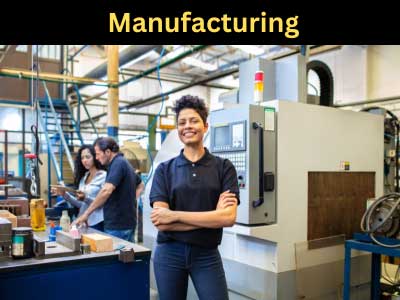Key Takeaway
Various machines are used in additive manufacturing, with 3D printers being the most common. Fused Deposition Modeling (FDM) printers, which use thermoplastic filaments, and Stereolithography (SLA) printers, which cure resin with a laser, are widely used for prototyping.
For more complex and durable parts, Selective Laser Sintering (SLS) and Direct Metal Laser Sintering (DMLS) machines are used, especially in industries like aerospace and automotive. Each machine type serves specific purposes, whether for rapid prototyping or high-strength, intricate parts. Choosing the right machine depends on the application and material requirements.
Overview of 3D Printing Machines and Technologies
Additive manufacturing, commonly known as 3D printing, relies on various machines that differ based on the technology used. The primary types include stereolithography (SLA), selective laser sintering (SLS), and direct metal laser sintering (DMLS) machines. These machines use different techniques to create three-dimensional objects layer by layer. The key feature of all 3D printers is their ability to build complex parts from digital models using materials like plastics, metals, or resins.
Each machine has its specific strengths and applications, making it essential to choose the right one depending on the materials and production needs. For example, SLA is preferred for fine details, while DMLS is used for producing metal parts. Understanding these differences helps manufacturers optimize their processes and select the right machine for their production requirements.

Stereolithography (SLA) Machines and Applications
Stereolithography (SLA) is one of the earliest forms of 3D printing technology and remains popular today. SLA machines work by using a UV laser to cure liquid resin into solid layers, following a digital blueprint. These layers are built one on top of the other until the object is fully formed. SLA machines are particularly known for their precision and the high-quality surface finish they provide, making them ideal for industries like healthcare, jewelry, and dental prosthetics.
SLA’s fine resolution enables it to produce highly detailed and intricate parts, such as custom medical models or precise prototype components. Despite these advantages, SLA requires more post-processing, such as cleaning and curing, to achieve a finished product. The resins used can also be more costly compared to other additive manufacturing materials, which may limit its use in high-volume production.
Even with its challenges, SLA remains indispensable where accuracy and surface finish are key priorities, offering unmatched detail compared to many other additive technologies.
Selective Laser Sintering (SLS) Machines for Industrial Use
Selective Laser Sintering (SLS) is widely used in industrial applications due to its ability to create functional prototypes and end-use parts with high durability. SLS machines work by using a laser to fuse powdered material, such as nylon or polymers, into solid objects. The machine builds the object layer by layer, and because the powder acts as a support structure, SLS can produce parts with complex geometries without the need for additional supports.
SLS is particularly advantageous in industries like automotive, aerospace, and manufacturing, where strength and durability are critical. The use of high-performance materials like nylon allows for the production of parts that can withstand mechanical stress and harsh conditions. Additionally, SLS is faster and more cost-effective than some other 3D printing methods, especially for batch production.
The technology’s ability to create intricate and robust components without the need for support structures makes it a favorite for industrial-grade parts, saving time and reducing costs in post-processing.
Direct Metal Laser Sintering (DMLS) Machines for Metal Additive Manufacturing
Direct Metal Laser Sintering (DMLS) machines are designed specifically for metal additive manufacturing. These machines use a laser to melt and fuse fine metal powders, such as titanium, stainless steel, or aluminum, into fully functional metal parts. DMLS machines are highly valued in industries like aerospace, automotive, and medical device manufacturing due to their ability to produce complex metal parts with high strength and durability.
What sets DMLS apart is its capacity to create lightweight, high-strength components that would be difficult or impossible to manufacture using traditional techniques. For example, DMLS can produce parts with internal lattices or hollow structures, which are essential for reducing weight without compromising strength—making it especially valuable in the aerospace sector. Post-processing steps, such as heat treatment, may be required to improve the mechanical properties of the printed metal parts.
Despite being more expensive and requiring more post-processing than plastic-based additive manufacturing, DMLS is indispensable when it comes to metal production.
Innovations in Additive Manufacturing Machines
The world of additive manufacturing is continuously evolving, with new machine innovations designed to improve production speed, material capabilities, and precision. Hybrid manufacturing machines, which combine additive and subtractive processes, are becoming increasingly popular. These machines allow manufacturers to 3D print an object and then refine it through CNC machining in a single setup, thus reducing time and costs associated with post-processing.
Another area of innovation is multi-material printing. Certain machines can now print using multiple materials simultaneously, enabling the creation of more complex objects with varied properties. For instance, one part of the object could be flexible, while another part is rigid. Innovations like binder jetting and continuous liquid interface production (CLIP) are also revolutionizing the field by increasing the production scale and drastically reducing print times.
As the capabilities of these machines continue to expand, additive manufacturing will become even more integral to industries that require high precision, customization, and efficiency.
Conclusion
Choosing the right additive manufacturing machine depends largely on the material, complexity, and application of the part being produced. Machines like SLA provide unmatched precision for detailed work, while SLS offers industrial-grade durability. DMLS is essential for manufacturing metal parts, and ongoing innovations in hybrid and multi-material printing are expanding the possibilities even further.
By understanding the strengths and limitations of each machine, manufacturers can make informed decisions to optimize their production processes, improve efficiency, and reduce costs.
